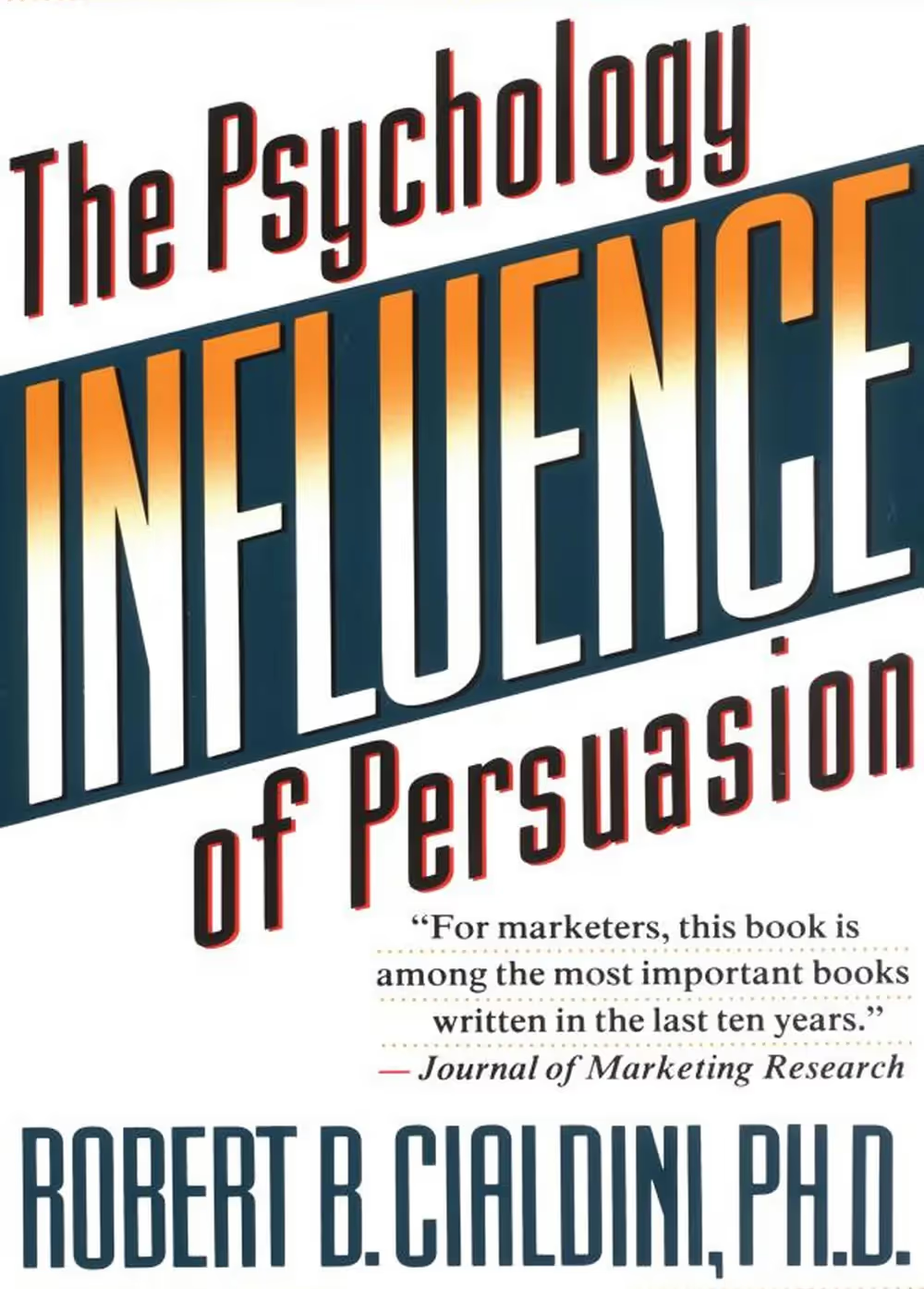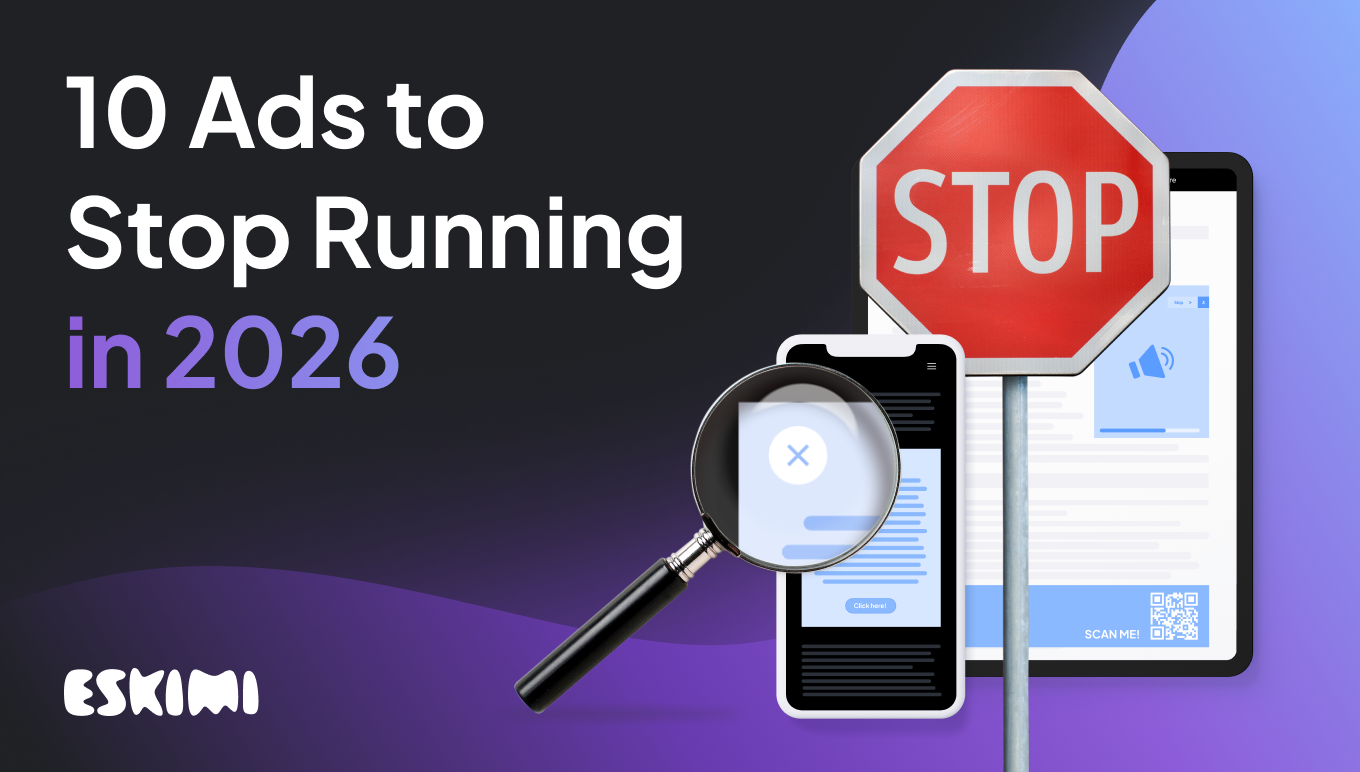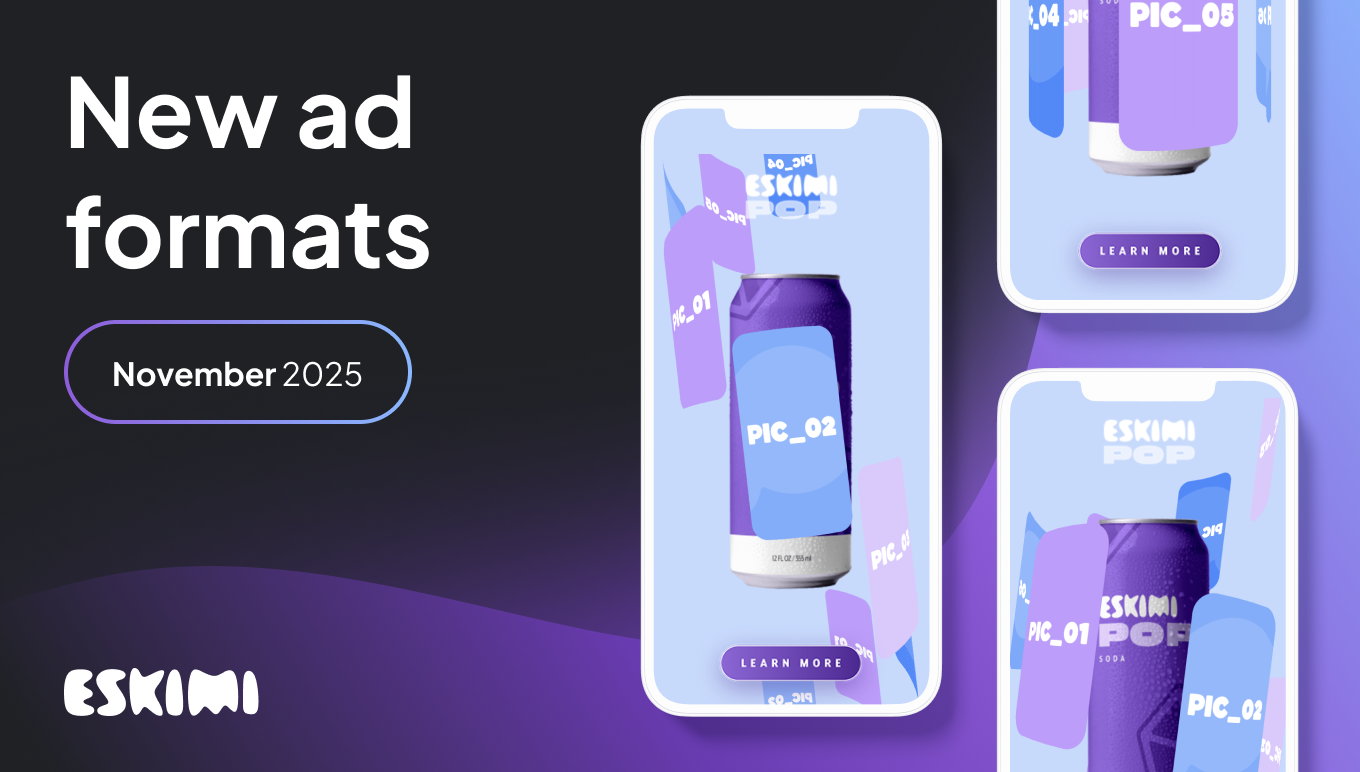13 advertising books every modern marketer should read

Are advertising books still relevant in marketing? After all, the advertising industry is changing so fast, can marketing books keep up at this point? The short answer is yes. The long answer is still yes. Advertising is an industry that constantly develops and grows - you should develop with it.
While the tools and tactics may shift, the core principles of advertising remain timeless. Advertising books not only have valuable lessons on business strategy, sales, and consumer behavior, but also can give you creative inspiration.
It’s not a matter of whether marketers need to read books, but what books they should read.
Fret not, we have the perfect list of advertising books for you.
So, whether you want to unlock your creative potential, delve into scientific advertising, or just look at some great ads, we have the book for you. Here’s how we picked them:
Author's credibility: Ensure the author has significant experience and has contributed valuable insights to the advertising field.
Content relevance: Check if the book combines contemporary insights with timeless principles.
Recommendations: There are countless recommendation lists online. If a book keeps appearing on these lists, it should be on your list, too.
Classic advertising books
Classic advertising books are sources of knowledge that contain timeless principles, which continue to guide marketers in today’s dynamic landscape. The insights found in these classics are rooted in deep understanding, seasoned expertise, and the inimitable wisdom of the advertising giants who authored them.
These books have laid the foundation of the marketing industry and remain relevant.

Confessions of an Advertising Man by David Ogilvy
One of the gems in the annals of advertising literature is David Ogilvy’s seminal work, “Confessions of an Advertising Man.” Written by a man often hailed as the "Father of Advertising," this masterpiece offers an unfiltered glimpse into the mind of an advertising titan.
Ogilvy's brilliance is captured in eloquent prose, intertwined with practical advice, making it as relevant today as it was when first published in 1963.
Insights: The book is a treasure chest of insights and wisdom. Ogilvy's candid and reflective narration delivers profound knowledge, unravelling the intricacies of advertising with precision and clarity.
Strategic approach: Ogilvy's book isn't just a narrative, but a comprehensive guide that covers essential advertising principles. It underscores a strategic advertising approach, highlighting the importance of research, understanding consumer behavior, and creative execution.
Real-world examples: Ogilvy enriched his work with real-world examples and case studies. Each chapter resonates with the authenticity of hands-on experience and unveils the secrets behind some of the most iconic ad campaigns of the 20th century.
Timeless principles: The book's enduring popularity is a testament to its timeless principles. “Confessions” articulates fundamental truths about advertising that transcend temporal and technological shifts. Each page is imbued with lessons that are as applicable in today's digital landscape as in the golden age of print advertising.

Ogilvy on Advertising by David Ogilvy
In advertising, few names are as renowned and revered as David Ogilvy, so it's not surprising that more than one of his advertising books made the list. His work, “Ogilvy on Advertising,” is not just a book but a bible for anyone venturing into the complex and captivating world of advertising. It covers:
Consumer psychology: Ogilvy's emphasis on the pivotal role of consumer behaviour and psychology in crafting compelling ads is unparalleled. Readers gain an in-depth understanding of tapping into consumers' minds to influence purchasing decisions.
Research-based approach: A staunch advocate for research, Ogilvy underscores the indispensability of data and insights in devising effective ad campaigns. It's a call for marketers to root their strategies in a scientific advertising approach.
Headline mastery: Ogilvy was a maestro of headlines. He opined that once you've written your headline, you've spent eighty cents out of your dollar. This book imparts invaluable strategies to craft headlines that captivate and convert.
Brand building: At its core, “Ogilvy on Advertising” is about constructing brands that stand the test of time. The principles outlined are instrumental in shaping brands that resonate with audiences and withstand evolving market trends.

Hey, Whipple, Squeeze This: The Classic Guide to Creating Great Ads by Luke Sullivan
This gem is not just another book on advertising; it's a go-to resource for marketers, seasoned and newbies alike. It provides instrumental strategies and practical knowledge rooted in the real-world advertising landscape.
The author, Luke Sullivan, garners respect for his extensive experience and ability to distil complex concepts into relatable narratives. Here are some notable elements:
Historical context: Sullivan adroitly weaves the rich tapestry of advertising evolution, offering readers a historical lens through which contemporary practices can be understood and appreciated.
Creative strategies: The book delves into the anatomy of compelling ads, dissecting the elements that constitute memorable and effective advertising campaigns.
Industry anecdotes: Sullivan's narrative is replete with real-world examples and anecdotes, offering readers a front-row seat to the triumphs and tribulations of the advertising world.
Books on digital and programmatic advertising
A whole new world is unveiled when you start exploring a more niche specialization. The advertising books become more specific for those interested in digital and programmatic advertising, and so does the search for those books.

Targeted: How Technology Is Revolutionizing Advertising and the Way Companies Reach Consumers by Mike Smith
In "Targeted," Mike Smith unravels the intricate world of digital and programmatic advertising, offering readers a detailed and insightful glance at the technological innovations shaping the industry.
"Targeted" delves into:
Technological integration: Smith elucidates on the seamless integration of technology in enhancing personalized and targeted advertising. It serves as a guide to understanding the complex algorithms and data analytics that drive programmatic buying and real-time bidding.
Consumer engagement: The book highlights the role of technology in enhancing consumer engagement. Smith's analysis offers actionable insights on optimizing advertisements to captivate audiences, enhance interaction, and foster brand loyalty.
Ethical considerations: In an era where data privacy is under the spotlight, "Targeted" delivers a thoughtful and balanced perspective. It explores the delicate trade-off between personalization and privacy, offering practical strategies to ensure advertising remains both effective and ethically sound.

Introduction to Programmatic Advertising by Dominik Kosorin
Kosorin's book should occupy a special place on any marketer's bookshelf. It comprehensively dissects the intricate world of automated media buying, illuminating complex concepts with eloquent simplicity.
Demystifying programmatic advertising: Kosorin adeptly unravels the complexities of automated, real-time auction ad buying, providing readers with a lucid understanding of how technology has revolutionized the advertising landscape.
Strategies and best practices: The book explores actionable strategies that illuminate optimal approaches to leveraging programmatic advertising effectively. It combines theoretical knowledge with practical insights, equipping marketers with tools to navigate this dynamic terrain with finesse.
Rich case studies: The book is embellished with compelling case studies that bring theory to life. Marketers glean insights from real-world scenarios, deriving practical lessons and strategies that can be seamlessly integrated into their campaigns.

Programmatic Advertising: The Successful Transformation to Automated, Data-Driven Marketing in Real-Time by Oliver Busch
Oliver Busch's book offers an exhaustive analysis, providing insights that are both profound and practical for marketers at all levels of expertise.
Foundational principles: Busch unravels the complex web of programmatic advertising with precision, grounding readers in the foundational principles. He deciphers jargon and complex concepts, making them accessible and comprehensible.
Strategic insights: Marketers are equipped with strategic insights to navigate the changing digital space. Busch's guides readers along a path of leveraging automated, data-driven approaches to optimize marketing campaigns.
Real-time data utilization: The book emphasizes the role of real-time data. Readers gain a nuanced understanding of harnessing instantaneous data for informed decision-making, enhancing targeting precision, and boosting ROI.
Behavioral advertising books
Behavioral advertising is a cornerstone in the complex structure of digital marketing. It is a data-driven approach that leverages consumer behavior, utilizing collected information to tailor ads specifically to individuals' preferences, habits, and interests. This personalization of content has been proven to significantly enhance the engagement and response rates of targeted audiences, driving both brand awareness and conversion rates.
One of the pillars of mastering this nuanced field lies in understanding the psychological triggers that influence consumer behavior. Amongst a plethora of resources, one book stands out, enlightening marketers on the intricacies of human behavior and its implications in advertising.

Influence: The Psychology of Persuasion by Robert B. Cialdini
Cialdini's books transcend traditional advertising concepts and delve into the psychological mechanisms that drive our decision-making processes.
Reciprocity: This principle elucidates the human tendency to reciprocate favors and kindness. In advertising, it's skillfully leveraged to induce a sense of obligation among consumers, prompting them to respond positively to a brand's offering or message.
Commitment and consistency: People strive for consistency in their beliefs, statements, and actions. Marketers exploit this trait by eliciting small commitments, which can lead to more significant commitments, fostering brand loyalty and customer retention.
Social proof: In an era overwhelmed with choices, consumers often look towards others for guidance. Advertisements bolstered by testimonials, reviews, and social shares epitomize the power of social proof, enhancing credibility and trust.
Authority: Consumers are inclined to follow the opinions and recommendations of experts. Establishing authority and expertise in the field ensures that your brand's message is not just heard but revered and followed.
Liking: Affinity towards a brand is often rooted in likability. From aesthetically pleasing visuals to relatable content, fostering a sense of liking significantly propels the effectiveness of advertisements.
Scarcity: The principle of scarcity is predicated on the human tendency to desire what is limited. Integrating elements of exclusivity and urgency in advertisements stimulates quick decision-making and elevates conversion rates.

Predictably Irrational: The Hidden Forces That Shape Our Decisions by Dan Ariely
With a blend of wit and accessibility, Ariely unveils the complex motivations that underlie our seemingly simple choices, offering invaluable insights for marketers.
Behavioral economics insights: Ariely presents a series of experiments and findings that unveil the irrational yet predictable patterns governing human behavior. Advertisers can harness these insights to develop more targeted and effective campaigns.
The power of relativity: The author dives into the concept of relativity and how people make choices based on the comparative value. Understanding this principle allows marketers to craft offers and ads that are perceived as highly valuable when compared to alternatives.
The influence of social norms: Ariely discusses the impact of social norms on our decisions. For marketers, acknowledging the balance between social and market norms can be pivotal in creating resonant messages that inspire action.

Hooked: How to Build Habit-Forming Products by Nir Eyal
Drawing from years of meticulous research and real-world application, Eyal unveils the secret recipe that turns casual users into dedicated brand ambassadors, providing readers with a comprehensive guide to nurturing client loyalty and driving sustainable business growth.
The book is structured around the "Hook Model," a four-step process that enlightens marketers on how to create addictive products that people can't resist. Each component of this model is meticulously examined, providing readers with profound insights into the mechanics of user behavior manipulation.
Trigger: This is the initial phase where potential users are prompted to take action. Eyal discusses both external and internal triggers, illuminating the ways marketers can effectively harness them to spur customer action.
Action: Here, Eyal explores the behavior executed by the user in anticipation of a reward. The author dives deep into the psychology that underpins these actions and how simplicity and convenience play pivotal roles in encouraging customer engagement.
Variable reward: In this section, readers are introduced to the art of administering rewards that have a variable nature, which in turn fosters a sense of intrigue and encourages repeated engagement.
Investment: The book emphasizes the importance of encouraging users to invest time or effort in the product, laying the groundwork for future engagements and solidifying the habit.
Books embracing new ways
Advertising has been around for centuries, so it’s no surprise that some bold thinkers choose to challenge the status quo and explore new, unconventional paths. In this section, we dive into advertising books that break the mold and offer fresh perspectives on the art and science of advertising.

The End of Advertising: Why It Had to Die, and the Creative Resurrection to Come by Andrew Essex
In the dynamic landscape of advertising, where change is the only constant, Andrew Essex's work, "The End of Advertising: Why It Had to Die, and the Creative Resurrection to Come," has carved out its own niche. It not only dissects the evolution and demise of traditional advertising but illuminates the pathway for its renaissance, crafted by creativity and innovation.
Essex's narrative pivots around a compelling premise that traditional advertising, with its intrusive nature and often one-dimensional approach, has reached its saturation point.
Consumers, empowered by technology, have more control over what they want to see and engage with. This shift in power dynamics has necessitated a rebirth, a creative resurrection, to make advertising more value-centric and less interruptive.
Insightful analysis: The book provides an in-depth examination of the advertising industry's evolution. Essex's knack for weaving engaging stories with hard facts offers readers a holistic view of the past, present, and future of advertising.
Creative resurrection: Andrew unearths the evolutionary trajectory of advertising. He underscores the indomitable spirit of creativity as the cornerstone for rebuilding an industry that is not just palatable but also beloved by consumers.
Actionable strategies: The book is not just a critique but a resource, laden with strategies and insights that are not merely theoretical but pragmatically applicable. Marketers will find a reservoir of inspiration to reinvent advertising strategies that resonate in the modern digital age.
Consumer-centric narrative: One of the pivotal themes is the shift towards a consumer-centric narrative. Essex challenges advertisers to reimagine advertising from the consumer's perspective, ensuring that it adds value, engages, and enriches the consumer experience.

Disruptive Marketing: What Growth Hackers, Data Punks, and Other Hybrid Thinkers Can Teach Us About Navigating the New Normal by Geoffrey Colon
Colon, with his profound insights, elaborates on the evolving nature of marketing and provides invaluable lessons interspersed with adept analysis, which is rooted in his rich experience and comprehensive understanding of the marketing domain.
Integration of diverse marketing strategies: The author emphasizes the necessity of amalgamating traditional marketing wisdom with new-age, innovative strategies. This amalgamation engenders a holistic approach, empowering marketers to leverage the strengths of both worlds to create compelling marketing narratives.
Embrace of data analytics: The book underscores the importance of data analytics. Colon argues that data isn't just a tool but a fundamental element shaping modern marketing narratives. He provides insights into harnessing the power of data and converting insights into actionable strategies.
The growth hacker's perspective: Colon's insights into growth hacking offer marketers a fresh perspective. He delineates the attributes of a growth hacker, focusing on agility, creativity, and an insatiable desire to grow and innovate constantly.
Navigating the digital landscape: With a plethora of platforms and mediums, the digital space can be overwhelmingly intricate. Colon simplifies this complexity, offering strategic insights for navigating digital spaces with dexterity and intelligence.
Books on enhancing creativity
The secret weapon in a marketer's arsenal often lies in their ability to weave creativity into their campaigns. After all, creativity is the most significant driver of success in a marketing campaign. Let's see what our chosen wordsmiths have to say about the creative process and engaging storytelling.

The Copywriter’s Handbook: A Step-By-Step Guide To Writing Copy That Sells by Robert W. Bly
This book is a treasure trove of insights, strategies, and actionable tips designed to refine your writing skills and unleash your creative genius.
Rich in techniques: Bly's handbook is inundated with a wealth of techniques that cater to both novices and seasoned professionals. It walks you through the art of crafting compelling copy that not only resonates with your audience but also drives them to action.
Practical insights: Bly goes beyond theoretical knowledge. The book is a goldmine of practical insights and hands-on exercises that help imbibe the art and science of copywriting. It's akin to a workshop that guides you, step by step, transforming complex concepts into actionable, manageable tasks.

Made to Stick: Why Some Ideas Survive and Others Die by Chip Heath and Dan Heath
In the bustling realm of advertising, "Made to Stick: Why Some Ideas Survive and Others Die" stands out as a quintessential read for marketers eager to carve a niche in the competitive landscape. Written by the renowned Heath brothers, Chip and Dan, this masterpiece is filled with nuggets of wisdom, insights, and pragmatic strategies that transcend traditional advertising dogma.
Simplicity: The Heath brothers underscore the potency of simplicity. In the crowded advertising space, the most memorable ideas are clear, concise, and free from unnecessary complexity. Marketers will learn to distill their messages to the most essential, creating ads that are not only easily understood but also remembered.
Credibility: In an era of widespread misinformation, establishing credibility is crucial. The Heath brothers delineate how integrating reliable data and trusted sources into your advertising augments authenticity and believability.
Emotions: Tugging at the heartstrings isn't a novel concept in advertising, but “Made to Stick” goes a step further. It delineates how evoking emotions can be strategically accomplished to make messages resonant and impactful.
Stories: The book brings to the fore the incalculable value of storytelling. It isn't about just narrating a tale; it's about integrating the brand into stories that are relatable, memorable, and shareable, hence amplifying the ad's reach and impact.
Great advertising starts with great thinking. These books won’t just teach you tactics—they’ll sharpen your instincts, deepen your strategy, and spark your creativity when you need it most.
Want more insights like these? Subscribe to our newsletter and get the best of advertising, creativity, and marketing strategy delivered straight to your inbox.
Level Up Your Advertising with Eskimi
- Reach 96% of Open Web
- 2,500+ Targeting Options
- 100% Managed or Self-Service
- In-House Creative Studio Team
- Display, Video, In-Game & CTV
- #1 Rated DSP on G2




.png)